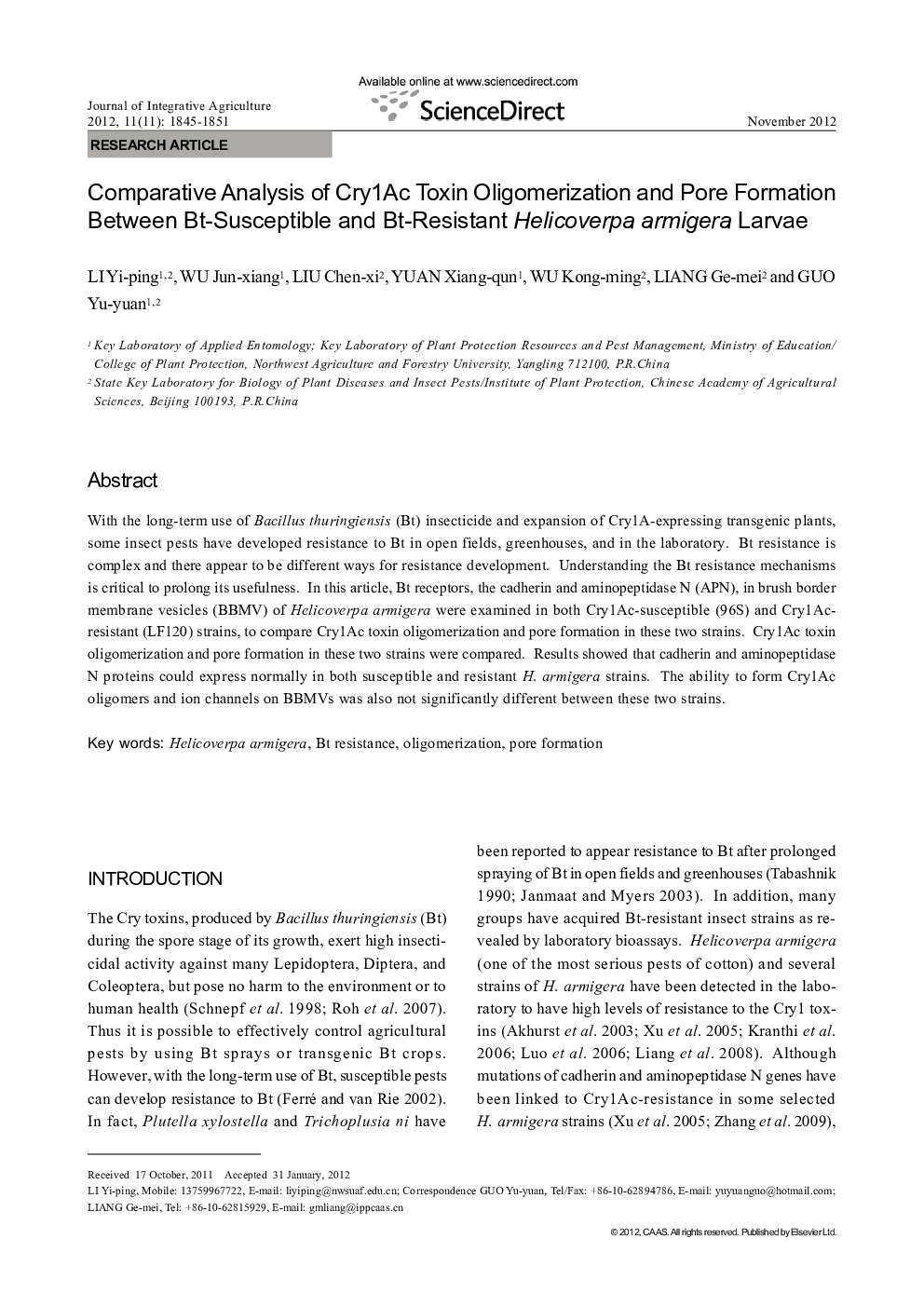| Article ID | Journal | Published Year | Pages | File Type |
|---|---|---|---|---|
| 4494988 | Journal of Integrative Agriculture | 2012 | 7 Pages |
With the long-term use of Bacillus thuringiensis (Bt) insecticide and expansion of Cry1A-expressing transgenic plants, some insect pests have developed resistance to Bt in open fields, greenhouses, and in the laboratory. Bt resistance is complex and there appear to be different ways for resistance development. Understanding the Bt resistance mechanisms is critical to prolong its usefulness. In this article, Bt receptors, the cadherin and aminopeptidase N (APN), in brush border membrane vesicles (BBMV) of Helicoverpa armigera were examined in both Cry1Ac-susceptible (96S) and Cry1Ac-resistant (LF120) strains, to compare Cry1Ac toxin oligomerization and pore formation in these two strains. Cry1Ac toxin oligomerization and pore formation in these two strains were compared. Results showed that cadherin and aminopeptidase N proteins could express normally in both susceptible and resistant H. armigera strains. The ability to form Cry1Ac oligomers and ion channels on BBMVs was also not significantly different between these two strains.
